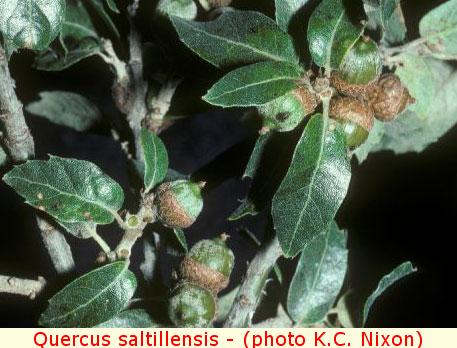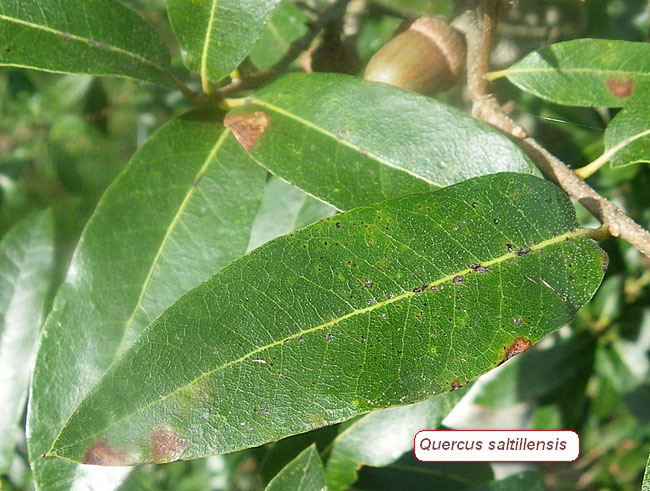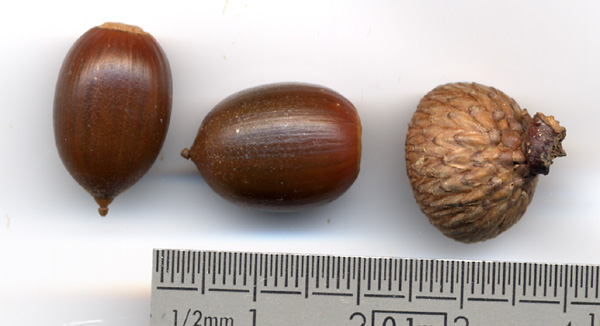| Quercus saltillensis | |
| Author |
Trel. 1924 Mem. Natl. Acad. Sci. 20: 183 Diagnosis here |
| Synonyms | carnerosana
Trel. 1924 sierramadrensis C.H.Mull. 1942 tenuiloba f. gracilis C.H.Mull. 1936 |
| Local names | |
| Range | Mexico (Coahuila,
Nuevo Leon, Tamaulipas, Zacatecas) ; |
| Growth habit | usually 1-5
m; often less than 3 metres tall, seldom to 12 m; |
| Leaves | 2-5 cm long,
1-1.8 wide; slowly deciduous; subcoriaceous, thin, flexible, not held
verticaly nor appressed to twig; lanceolate, elliptic or oblong, seldom
oblanceolate; apex acute, bristle-tipped, seldom rounded; base rounded
or heart-shaped; margin slightly revolute or flat, entire or with 1 or
2 bristle-tipped teeth near apex; lustrous dark green, somtimes with stellate
hairs, glabrescent above; paler beneath, glabrescent, with a whitish,
scratchable tomentum made of stellate trichomes, becoming rarer in summer
(only at axils); 5-12 vein pairs, flat adaxially and slightly raised abaxially;
epidermis smooth; petiole 2.5-8 mm long, glabrous or with the same tomentum
as on the twigs; |
| Flowers | male inflorescence 4-5 cm; female inflorescence 5-15 mm bearing 1-2 flowers; |
| Fruits | acorn oblong, 0.5-1.5 cm long, singly or to 3, sessile or on a short stalk less than 0.5 cm; cup not rolled at rim, with flat, appressed, hairy scales, 1 cm in diameter, enclosing 1/2 of the nut; maturing in 1 year in September; |
|
Bark, twigs and |
bark
furrowed, dark; twig slender, 1.5-2.5 mm, with a stellate, greyish, 2
years persistent pubescence; bud ovoid or conical, brownish 1.5-2.5 mm
long, with ciliate scales; stipules deciduous; |
| Hardiness zone, habitat | probably hardy, at least in zone 8; withstands -13°C; |
| Miscellaneous | -- A.
Camus : n° 370; -- Sub-genus Quercus, section Lobatae, Series Erythromexicanae, Group Saltillenses; |
| Subspecies and varieties |
|
| Pictures |
|



